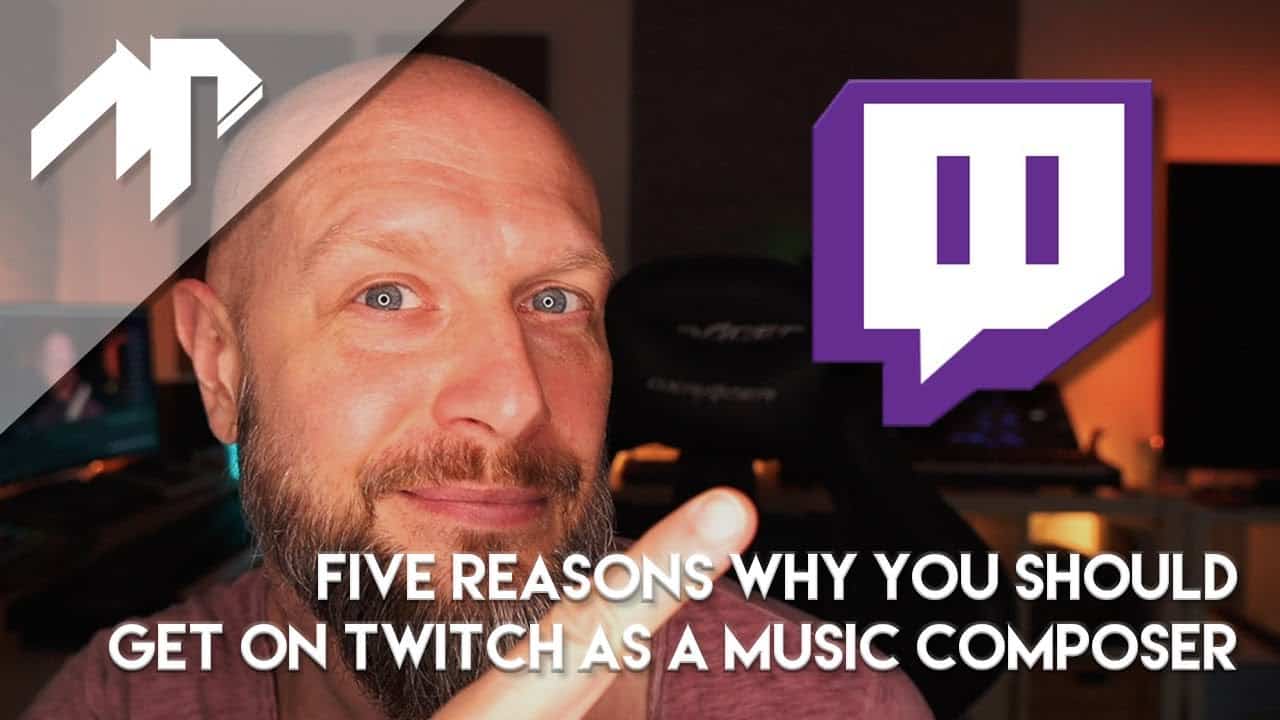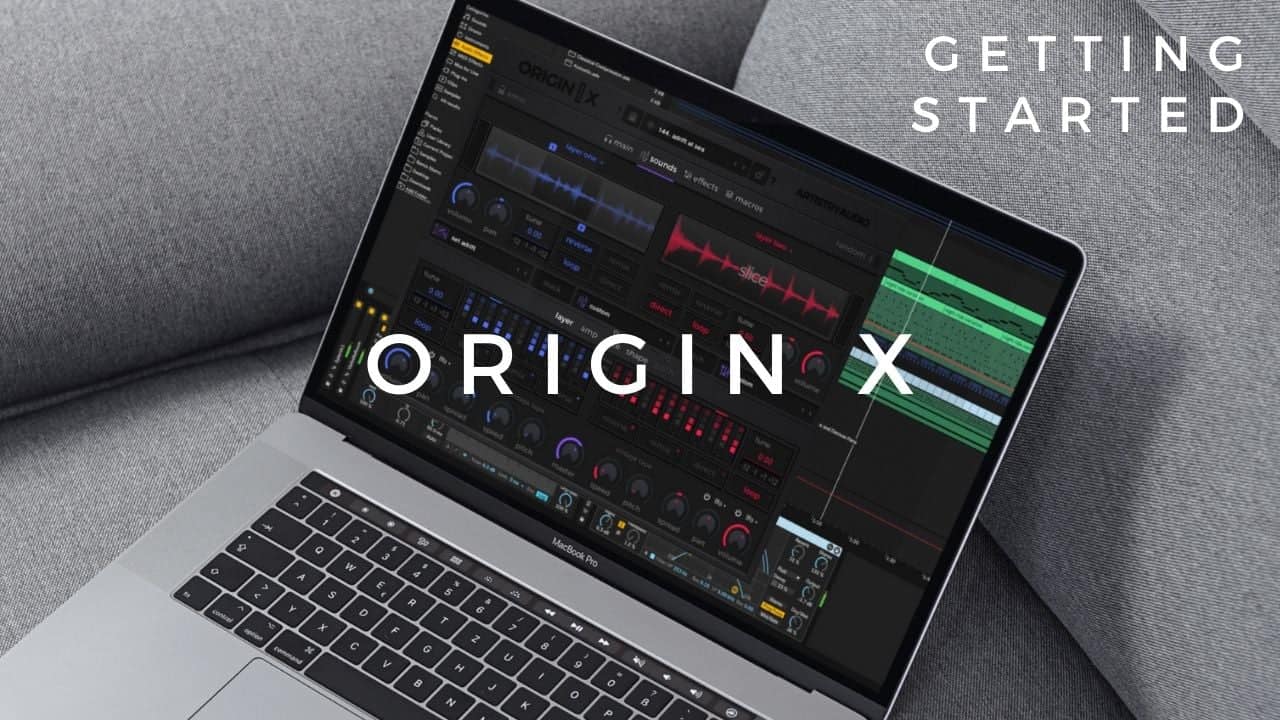Social media algorithms play a crucial role in determining your content’s visibility. They assess user interactions, such as likes and shares, to prioritize what your audience sees. This means creating engaging, relevant posts is key. Timeliness also matters, as newer content often gets favored. By understanding these dynamics, you can better strategize your posts for maximum reach. Keep exploring to uncover more insights on optimizing your social media presence.
Key Takeaways
- Social media algorithms prioritize content based on user interactions like likes, comments, and shares, affecting visibility significantly.
- Personalized feeds enhance user engagement by showcasing posts aligned with individual preferences rather than chronological order.
- High engagement rates signal algorithms to promote content visibility, making audience interaction crucial for success.
- Timeliness and relevance are key factors; newer posts and those matching user interests receive preferential treatment in feeds.
- Understanding and adapting to algorithm changes can optimize content strategies and enhance overall reach and effectiveness.
Understanding How Social Media Algorithms Work
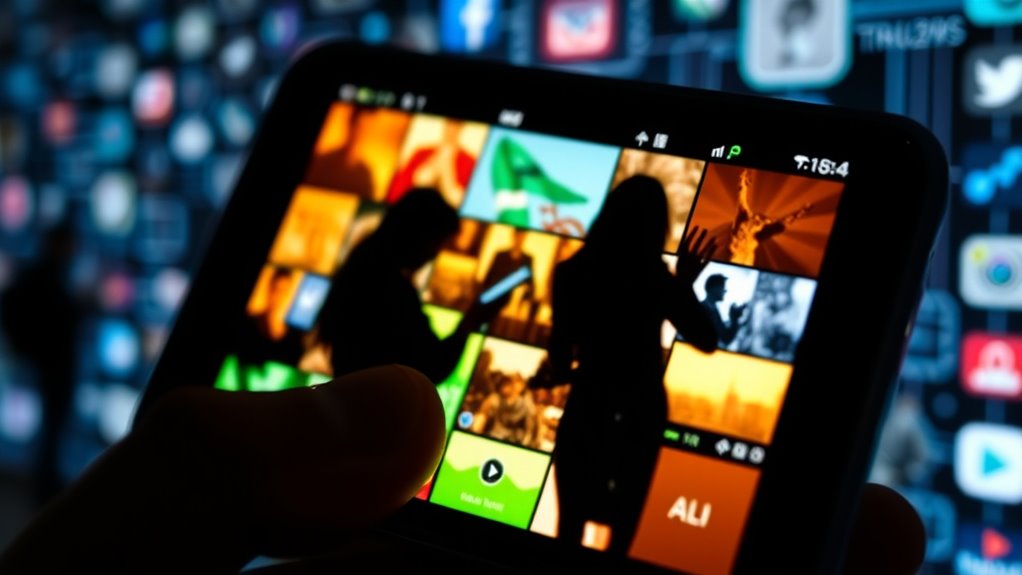
Social media algorithms play a crucial role in determining what content you see on your feeds. These algorithms analyze your interactions, like likes, shares, and comments, to gauge what you find relevant. They collect data on your behavior and curate your feed accordingly, enhancing your engagement with the platform.
Each social media platform uses unique algorithms tailored to its audience; for instance, Instagram favors videos while Facebook prioritizes posts from friends. Over time, these algorithms have evolved to focus on relevance rather than recency, ensuring you see content that matters most to you.
Understanding how these algorithms work can help you navigate your social media experience more effectively, increasing your engagement and satisfaction.
Key Metrics Influencing Content Visibility

Understanding how algorithms shape your social media experience sets the stage for exploring the key metrics that influence content visibility.
Likes and reactions serve as the foundation, signaling the appeal of your content. Comments indicate deeper engagement, fostering conversations that algorithms favor. Shares significantly expand your reach, attracting new followers and endorsements.
Likes and reactions signal content appeal, while comments foster deeper engagement, and shares broaden your audience reach.
Don’t overlook saves, as they show users value your content enough to revisit it later. The engagement rate measures overall audience involvement, guiding your strategies.
Additionally, incorporating video and interactive formats boosts engagement, while visual elements enhance visibility.
Lastly, understanding audience behavior, such as interaction patterns and segmentation, ensures your content resonates well, maximizing its visibility across platforms.
The Role of Relevance and Timeliness

While navigating social media, you’ll notice that relevance and timeliness play crucial roles in determining what content gets seen. Algorithms prioritize posts that align with your interests and current trends, using your past interactions to suggest similar content.
Keywords and hashtags enhance visibility by providing necessary context. Timeliness matters, too; newer posts often take precedence, keeping your feed fresh and engaging. By posting at optimal times, you can boost engagement and visibility.
Platforms like Twitter highlight recent tweets, emphasizing the importance of staying current. To maximize your reach, create relevant content that resonates with your audience and aligns with trending topics.
Balancing relevance with timely updates is key to an effective content strategy.
Content Types and Their Performance Across Platforms
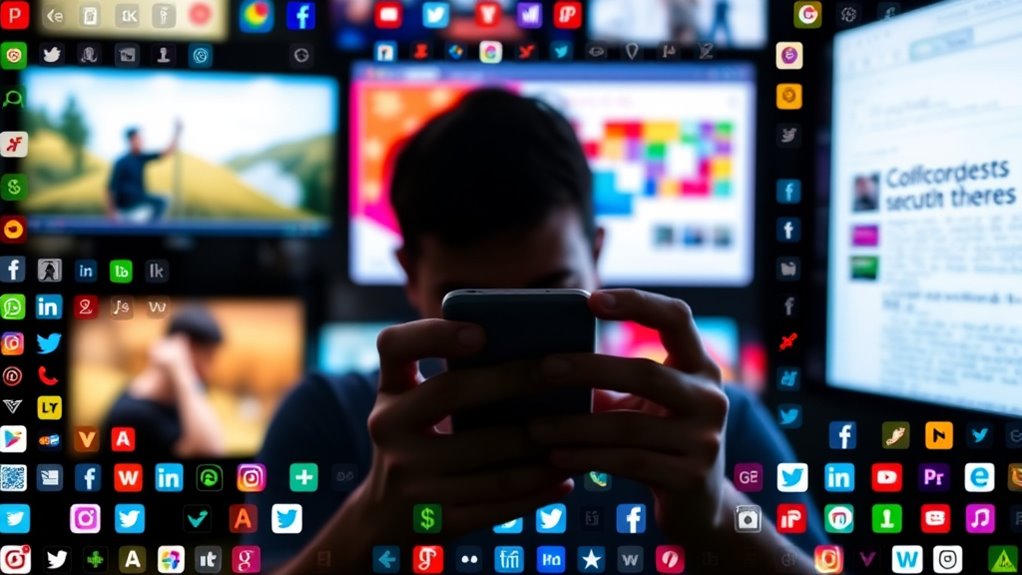
As you explore different content types on social media, you’ll discover that each platform has unique preferences that significantly impact engagement and visibility.
Video content, especially short-form videos, yields the highest ROI, with Instagram Reels and TikTok leading in engagement. For TikTok, aim for videos between 15-30 seconds, while YouTube benefits from longer formats. The use of AI tools can enhance visual content creation, further boosting engagement rates.
On Facebook, simple text posts and short videos under 15 seconds perform best, emphasizing authentic, conversational content. User-generated content (UGC) shines across platforms, driving trust and purchase decisions. Additionally, leveraging predictive analytics can help brands tailor their content strategies to match audience preferences more effectively.
The Effects of Algorithmic Filtering on User Experience

Algorithmic filtering significantly shapes your social media experience, influencing the content you see and how you interact with it.
These algorithms create filter bubbles and echo chambers, limiting your exposure to diverse perspectives and reinforcing existing beliefs. As a result, you might find yourself engaging with similar content, which can lead to increased polarization and negatively impact your mental health.
You’re less likely to stumble upon new ideas, reducing serendipity in your online interactions. Personalized feeds prioritize content based on your past engagements, often narrowing your worldview.
While this boosts engagement and session times, it may also limit your access to reputable news sources, increasing the risk of misinformation. Ultimately, your social media feed becomes a reflection of your past, not a window to the world.
Analyzing User Behavior for Content Optimization

To optimize your content for social media, you need to analyze engagement patterns and behavioral trends among your audience.
By understanding how users interact with your posts, you can tailor your strategy to boost visibility.
Recognizing what resonates with your audience will help you create more engaging and relevant content.
Engagement Patterns Analysis
Understanding engagement patterns is essential for optimizing content on social media. You should pay attention to metrics like likes, comments, and shares, as these indicate how your audience interacts with your posts.
High engagement rates signal algorithms to prioritize your content, enhancing its visibility. To create compelling posts, focus on visuals that capture attention and spark interaction, such as polls or questions.
Timing matters too; posting when your audience is active can significantly boost engagement. Don’t forget to analyze your data regularly using tools like Facebook Insights or Google Analytics. Additionally, implementing Etsy SEO strategies can help you refine your content for better visibility across platforms.
This way, you can refine your strategies and ensure your content resonates with your audience, driving traffic and conversions effectively.
Behavioral Trends Insights
How can you effectively leverage behavioral trends to optimize your content? Start by analyzing user interactions—likes, shares, and comments reveal what resonates with your audience.
Focus on content types that your followers engage with most, whether that’s videos or articles. Remember, each platform has its own unique behaviors; for example, LinkedIn thrives on professional content.
Participate in trending challenges on platforms like TikTok to boost visibility. Tailor your content based on behavioral data to enhance user experience, making it easy for followers to interact.
Use polls and questions to encourage engagement and maintain a feedback loop. By adapting your strategies as algorithms evolve, you’ll keep your content relevant and maximize its reach.
Strategies to Boost Engagement and Visibility

While creating content that resonates with your audience is essential, implementing effective strategies to boost engagement and visibility is equally important.
Start by understanding each platform’s algorithm to tailor your content accordingly. For instance, prioritize Reels and Stories on Instagram, and ensure your posts are timely and relevant to current events.
Incorporate interactive elements like polls and questions to spark conversation. Don’t forget user-generated content; it not only engages your audience but also enhances visibility.
Consistency is key—post regularly and at optimal times to maximize reach. Lastly, encourage interactions through calls-to-action and actively respond to comments.
These strategies will help signal to algorithms that your content deserves a wider audience.
Harnessing Analytics for Data-Driven Decisions

Boosting engagement and visibility is just the beginning; harnessing analytics can elevate your social media strategy to new heights. Start by collecting data from platforms like Facebook and Instagram to inform your decisions.
Use analytics tools to analyze engagement metrics, helping you understand your audience’s demographics and preferences. Track likes, shares, and comments to gauge content success and optimize your ROI.
Descriptive analytics reveals trends, while diagnostic analytics uncovers reasons behind those trends. Predictive and prescriptive analytics can forecast outcomes and recommend future actions. Additionally, adopting an MVP (Minimum Viable Product) approach allows you to test content quickly and refine your strategy based on real-time feedback.
The Evolution of Social Media Algorithms

As social media platforms grew, they’d to adapt their algorithms to manage the increasing volume of content and enhance user experience.
Initially, feeds were chronological, showcasing the latest posts, but as user engagement became a priority, platforms like Facebook introduced personalized feeds in 2009. This marked a significant shift towards algorithmic content delivery.
Facebook’s EdgeRank in 2011 prioritized posts based on interactions, while Instagram and Twitter followed suit, emphasizing relevance over recency.
Today, algorithms analyze likes, shares, and comments to determine content visibility, creating personalized feeds that resonate with users.
As trends evolve, such as influencer marketing and video content, algorithms continuously adapt, ensuring you see the most engaging content tailored to your interests.
Preparing for Future Algorithm Changes
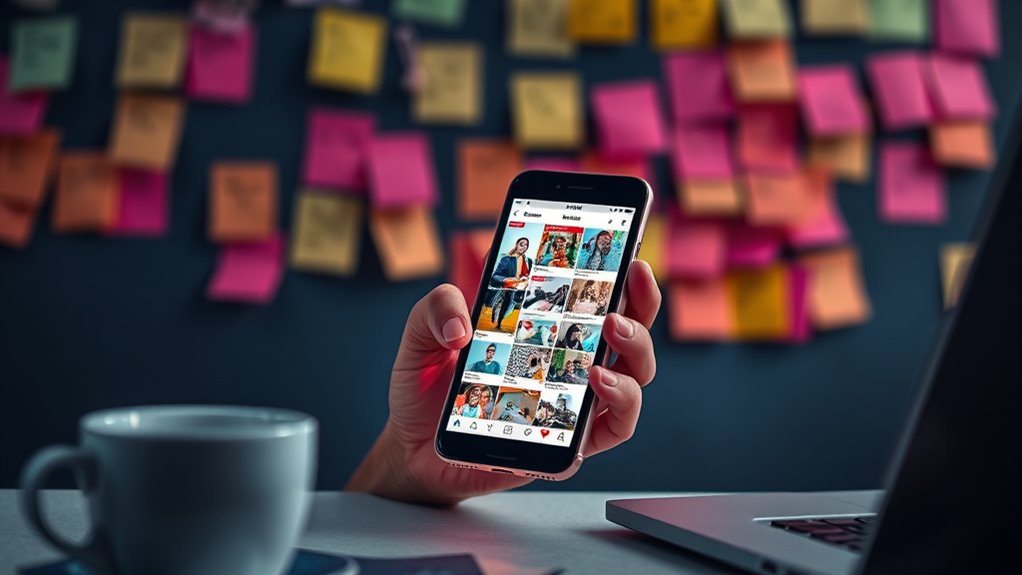
To stay ahead of the curve, you need to anticipate and adapt to future algorithm changes that will shape content visibility on social media platforms.
Focus on creating authentic, engaging content that sparks interaction—likes, shares, and comments are vital. As AI-driven recommendations evolve, tailor your content to user preferences and interests.
Stay flexible in your strategies, as algorithms increasingly favor creators with clear data privacy practices. Regularly analyze your performance metrics to refine your approach, and maintain consistency across platforms.
Incorporate interactive features to boost engagement and consider leveraging paid strategies for greater reach.
Lastly, keep an eye on emerging trends like voice integration and hyper-targeted content to ensure you’re not left behind.
Frequently Asked Questions
How Do Social Media Algorithms Affect Influencer Marketing Strategies?
Social media algorithms shape your influencer marketing strategies by prioritizing content that engages users.
If you focus on creating high-quality, relevant content that sparks interaction, you’ll improve visibility.
You need to stay updated with algorithm changes to adapt your tactics, ensuring your posts resonate with specific audience segments.
Can Algorithm Changes Impact Brand Visibility Immediately?
Isn’t it funny how a simple algorithm tweak can turn your brand visibility upside down overnight?
Yes, algorithm changes can impact your brand’s visibility immediately. When platforms shift their priorities, your content might suddenly vanish from feeds.
If your posts don’t engage users, you’ll notice a drop in reach right away. To combat this, you’ll need to adapt quickly, focusing on creating engaging content to keep your visibility afloat.
Are There Universal Strategies for All Social Media Platforms?
Yes, there are universal strategies that can enhance your visibility across all social media platforms.
Focus on creating engaging, high-quality content that resonates with your audience. Consistently post at optimal times to maximize reach and encourage interactions through calls-to-action.
Utilize relevant hashtags to boost discoverability, and leverage analytics tools to understand your audience better.
How Often Do Social Media Platforms Update Their Algorithms?
Social media platforms update their algorithms frequently, with major updates happening a few times each year.
These updates significantly impact how content is prioritized. You’ll also notice minor tweaks occurring more often, usually without any announcements.
The platforms adapt based on user feedback and content trends, ensuring they deliver relevant and engaging experiences.
Staying aware of these updates can help you adjust your strategies to maintain visibility and engagement with your audience.
What Role Do Paid Promotions Play in Algorithm Visibility?
Paid promotions can skyrocket your content’s visibility, while organic reach may lag behind. When you invest in targeted ads, you ensure your content reaches the right audience quickly.
But, it’s essential to remember that without high-quality content and engagement metrics, even paid strategies might falter.
Balancing paid efforts with organic growth can maximize your visibility, making sure your posts resonate and attract attention consistently across platforms.
Conclusion
In understanding social media algorithms, you gain the power to enhance your visibility. By recognizing key metrics, adapting your content, and embracing analytics, you can elevate engagement and reach. As algorithms evolve, staying informed and flexible will keep you ahead of the curve. So, prioritize relevance, adapt your strategies, and anticipate changes. When you invest in these areas, you not only improve your content’s performance but also enrich your overall social media experience.





